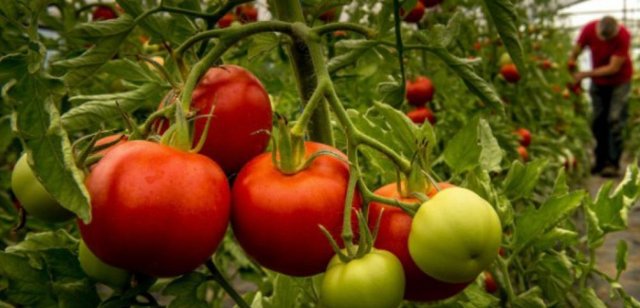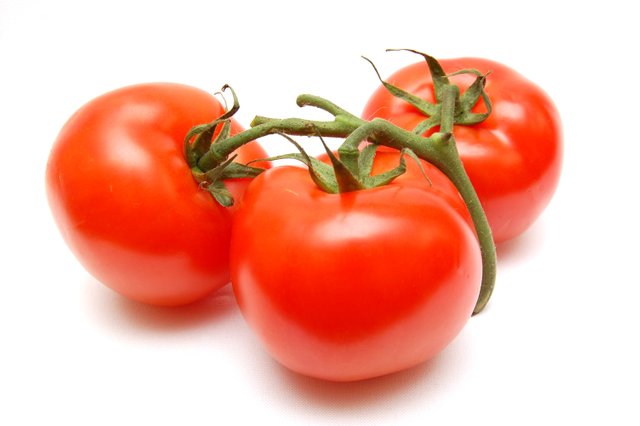How to grow tomatoes in their home gardens

Greetings. During today's edition we will be learning how to grow tomatoes in our home gardens. In past editions we have learned how to grow potatoes, pumpkins, yautias and peppers. We take the opportunity to mention that they are pending to the biweekly edition of this blog, because if God allows it, there will be 35 crops that we will learn to work by this means. We will also be publishing issues such as: what is the relationship between the Moon and agriculture, how to prepare compost, which is the pH and how it affects the feeding of plants and how to improve it organically, crop rotation, biological control of pests in the orchard and how to maintain a lively and productive soil, among other topics. Information of great interest for lovers of home gardens and organic or ecological agriculture, but best of all, in one place.
The purpose of www.huertocaseror.com is to prepare you, so you can produce your food. So, if any need or emergency arises, you are ready and prepared to meet the demand for food from your family and loved ones, without the need or dependence on external inputs. If not with what you have learned here, and with what you can produce in your patio or home garden.
As usual and so that you can visualize the scheme that we are going to develop during today's teaching, here are the steps or processes, which we will be detailing later:
· FIRST: you will learn what the tomato seed is and how you should select it.
· SECOND: will know, how to prepare the land for tomato cultivation.
· THIRD: way of transplant and some specifications.
· FOURTH: how to supply the water properly.
· FIFTH: we will explain when and how the tomato should be harvested.
WE START
I. ¿WHAT IS THE TOMATO SEED AND HOW SHOULD I SELECT IT?
The seed of the tomato are the seeds (seeds) that are inside a tomato.
To collect seeds it is advisable to select large, healthy and ripe tomatoes, as we have mentioned in past occasions, there is a 90% chance, that according to the fruit we take the seeds, so will most of the fruits of the future plantation .
Allow the seeds to dry in a cool, moisture-free place for 3 days.
Do not expose the seeds directly to the Sun.
After 3 days, store them in a Zip lock bag, at the bottom of the refrigerator, until the time of planting.
II. HOW TO PREPARE THE EARTH FOR THIS CULTIVATION AND OTHER SPECIFICATIONS.
Select a place where the plants receive Sun throughout the day, that is 8 hours or more daily. This crop is favored by long sunny days, since they are formidable for their vegetative development (summer and spring). However, these days arrive during the same months, when most of the pests of an orchard appear, so we must maintain good integrated pest management.
Thanks to the climate we enjoy in Puerto Rico, we can grow tomatoes throughout the year, including short autumn and winter days.
The cultivation of tomatoes likes fertile and drained soils, so sandy loam or clayey soils with sand and abundant organic matter are perfect.
If your soil retains a lot of water or compacts easily, add a little river sand. The sand will create spaces between the clay, preventing it from compacting and accumulating excess water.
The depth of loose soil must NOT be less than 18 inches. So, using the beak, break the ground and then rake as many times as necessary, until all roots, stones or weeds are removed. It must achieve that the soil acquires the adequate physical conditions: soft, drained and ventilated.
The ideal pH for this crop fluctuates between 5.9 and 6.5
As we have mentioned in the past, add organic matter, manure or compost to the soil and ignore the pH, since organic matter, manure or compost, will activate the biological life of the soil, improving the capacity of chemical exchanges, (cationic) which will result in a natural improvement in the soil hydrogen potential (pH) and in the physical condition of the soil.
III. WAY OF SOWING AND SOME SPECIFICATIONS
Although there is an extensive variety of tomatoes, the most common in Puerto Rico are certain varieties, such as "Floradell, Beefsteak or salad, the Cherry better known as tomato latrine and Jobo", they are high performance in our island and its pleasant flavor to the Puerto Rican market.
Sometimes it is possible to obtain seeds of these varieties in the Agricultural Experimental Substations of Isabela or Lajas, as in some agro centers, which already sell organic seeds.
We recommend first germinating the seeds in a nursery, and then transplanting the seedlings to the garden.
The transplant should be done when the seedlings or seedlings have a height of 4 to 5 inches.
For the transplant, make a hole about 6 inches around by 4 inches deep, then add abundant compost inside it.
Sow the seedling, taking into consideration that the pile of soil adhered to its root system is completely covered, but without covering the green part of the stem, nor any of its leaves.
Immediately after and about 6 inches removed from the seedling, nail a 5 foot high wooden stake. This practice is done to tie the plant to the stake and provide support to it, as it grows, which prevents it from bending. Also, to avoid when the plant begins its fruiting period the weight of the tomatoes throw it to the ground.
The distance between one and another row of plants, should be 2 feet and the distance between one and another plant in the same way.

Its vegetative development will be rapid and the determined growth varieties will be able to reach a height between 3 to 5 feet.
Keep the area clean and weeded, as it is a plant very susceptible to pests, fungi and bacteria.
IV. WAY OF IRRIGATION
When sow the seeds in the nursery, keep it to the Sun completely. And water 3 to 4 times during the day, remember that the adsorption of water by the seeds and the high temperatures caused by the Sun, will promote an early germination .
After germinated and while the plants only have their first pair of leaves, (cotyledons) place them in a place where they only receive between 4 or 5 hours of sun daily. During this period it is important to water them at least twice a day.
Once you have developed your third pair of true leaves, water them only in the morning.
After the transplant and during its vegetative development, water the plant with more water, but always in the root, never in the leaves or in its flowers.
Water should NEVER be absent, however there should be no accumulation of water in the ground, so it is necessary to establish a good drainage system prior to planting.
V. TIME FOR THE HARVEST AND WAY OF HARVESTING
Between 65 and 100 after the transplant the harvest will begin, according to the cultivated variety.
It is recommended to harvest pints that are neither green nor ripe and let them ripen in the house. This recommendation is made with the purpose of preventing pests from getting ahead of the harvest.

Congratulations @carlos-danieel! You have completed some achievement on Steemit and have been rewarded with new badge(s) :
Click on any badge to view your own Board of Honor on SteemitBoard.
To support your work, I also upvoted your post!
For more information about SteemitBoard, click here
If you no longer want to receive notifications, reply to this comment with the word
STOPCongratulations! Your post has been upvoted by Reach Out, which is proudly sponsored by @eturnerx. Our goal is to support Nigerian minnows on Steemit. Join our discord group https://discord.gg/mMHW5e8